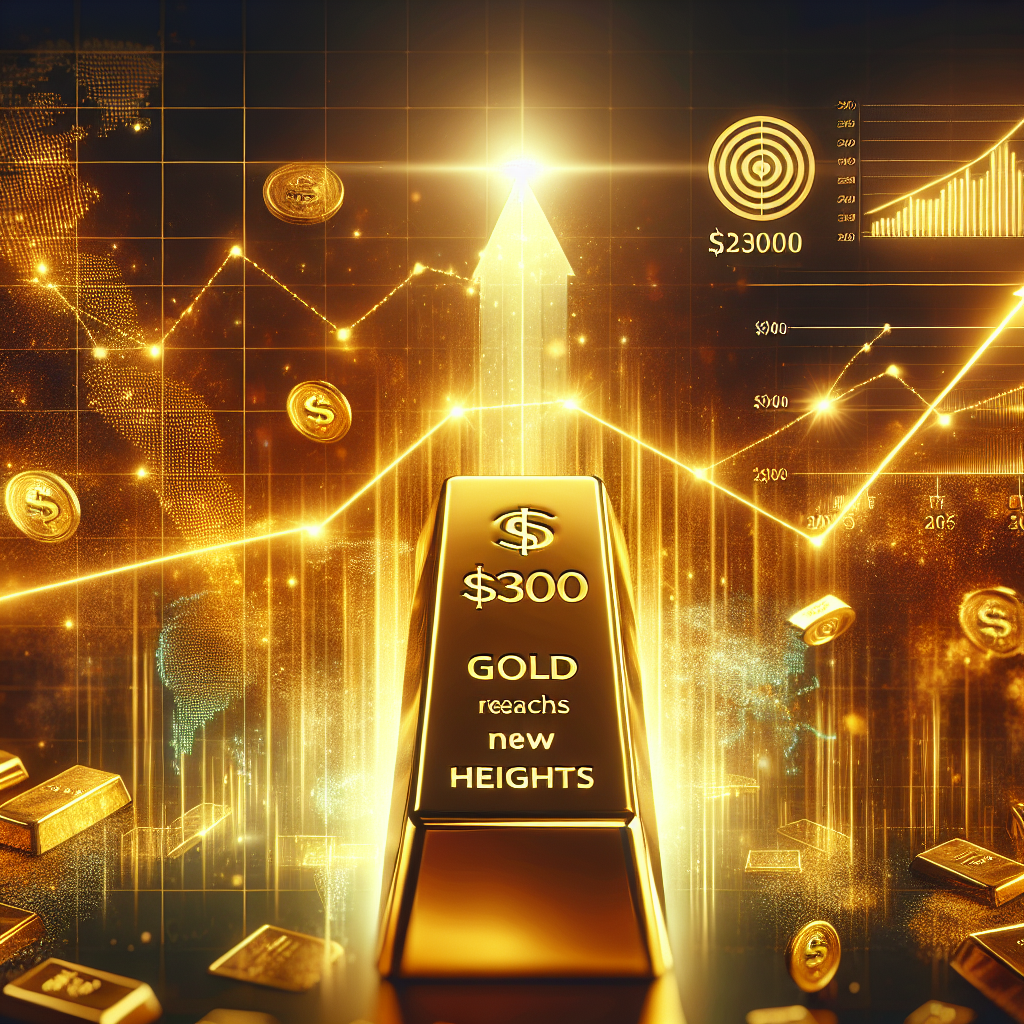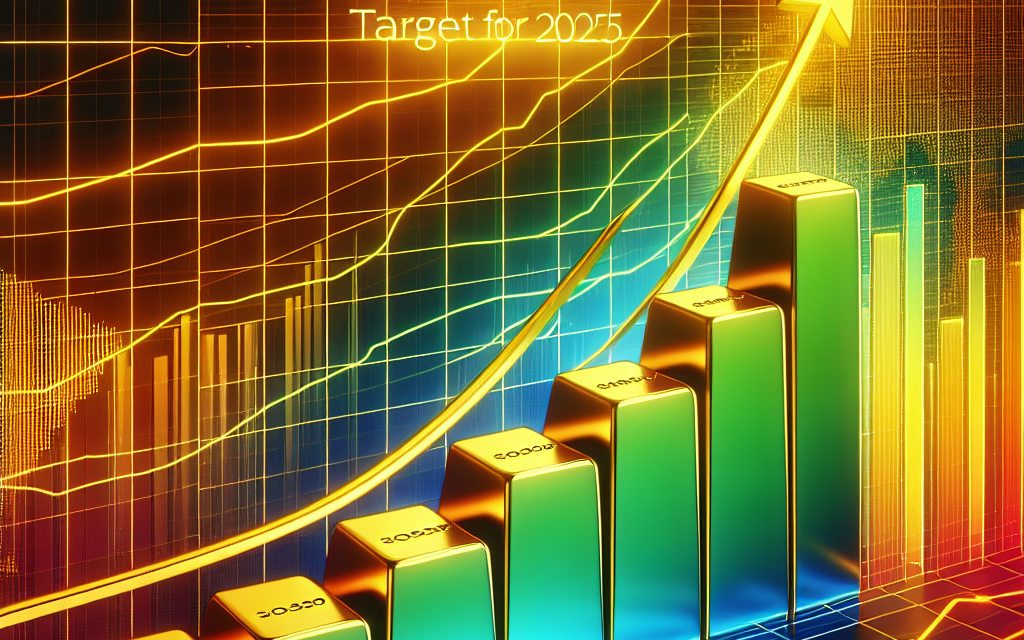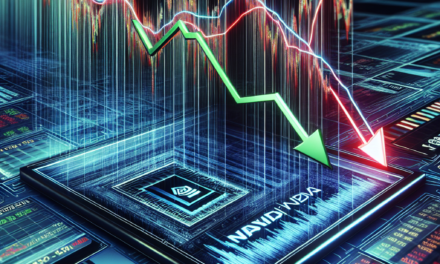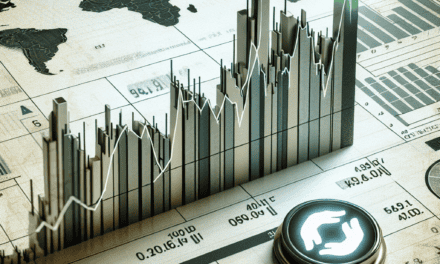“Golden Horizon: Goldman Eyes $3,000 Milestone by 2025”
Introduction
Gold prices have experienced a significant surge following Goldman Sachs’ reaffirmation of its ambitious $3,000 per ounce target for 2025. This bullish forecast has reignited investor interest in the precious metal, driven by a combination of economic uncertainties, inflationary pressures, and geopolitical tensions. As a traditional safe-haven asset, gold’s appeal is further bolstered by concerns over currency devaluation and fluctuating interest rates. Goldman’s projection underscores a growing confidence in gold’s long-term value proposition, positioning it as a key asset in diversified investment portfolios.
Impact Of Goldman’s $3,000 Target On Global Gold Markets
The recent reaffirmation by Goldman Sachs of its ambitious $3,000 per ounce target for gold by 2025 has sent ripples through the global gold markets, sparking a renewed interest among investors and analysts alike. This projection, which suggests a significant increase from current levels, underscores the potential for gold to serve as a robust hedge against economic uncertainties and inflationary pressures. As the world grapples with fluctuating economic conditions, the allure of gold as a safe-haven asset becomes increasingly pronounced.
To understand the impact of Goldman’s forecast, it is essential to consider the factors driving this bullish outlook. One of the primary catalysts is the persistent inflationary environment, exacerbated by expansive fiscal policies and supply chain disruptions. As central banks around the world continue to grapple with rising prices, the appeal of gold as a store of value is likely to grow. Moreover, the geopolitical landscape remains fraught with tensions, from trade disputes to regional conflicts, further enhancing gold’s status as a refuge in times of uncertainty.
In addition to these macroeconomic factors, the demand for gold is also being bolstered by structural shifts in the market. Notably, there is a growing interest in gold from emerging markets, where rising incomes and a burgeoning middle class are driving increased consumption of gold jewelry and investment products. Furthermore, central banks, particularly in countries like China and Russia, have been steadily increasing their gold reserves as part of a broader strategy to diversify away from the US dollar. This trend is expected to continue, providing a solid foundation for sustained demand.
The impact of Goldman’s $3,000 target is also evident in the behavior of market participants. Investors, both institutional and retail, are recalibrating their portfolios to include a greater allocation to gold, anticipating that the metal’s value will rise in line with the forecast. This shift is reflected in the increased activity in gold futures and exchange-traded funds (ETFs), which have seen a surge in inflows as investors seek to capitalize on the anticipated price appreciation.
However, it is important to acknowledge the potential challenges and risks associated with this bullish outlook. The gold market is inherently volatile, and prices can be influenced by a myriad of factors, including changes in interest rates, currency fluctuations, and shifts in investor sentiment. Additionally, technological advancements in mining and the discovery of new reserves could alter the supply dynamics, potentially impacting prices.
Despite these uncertainties, the reaffirmation of Goldman’s $3,000 target has undeniably injected a sense of optimism into the gold market. It serves as a reminder of the metal’s enduring appeal and its ability to adapt to changing economic landscapes. As investors navigate the complexities of the global economy, gold’s role as a strategic asset is likely to remain prominent.
In conclusion, Goldman’s projection for gold prices by 2025 has significant implications for the global gold markets. It highlights the interplay of economic, geopolitical, and market forces that continue to shape the demand for this precious metal. As the world faces an uncertain future, gold’s status as a reliable store of value and a hedge against volatility is poised to strengthen, making it an attractive proposition for investors seeking stability and growth.
Historical Analysis Of Gold Price Surges And Predictions
Gold has long been regarded as a safe haven asset, a reliable store of value during times of economic uncertainty. Its allure is not only rooted in its physical properties but also in its historical performance during periods of financial instability. Recently, Goldman Sachs reaffirmed its ambitious target of $3,000 per ounce for gold by 2025, a prediction that has captured the attention of investors worldwide. To understand the implications of this forecast, it is essential to examine the historical patterns of gold price surges and the factors that have driven these increases.
Historically, gold prices have experienced significant surges during times of geopolitical tension, inflationary pressures, and economic downturns. For instance, during the 1970s, gold prices skyrocketed as the world grappled with high inflation and the collapse of the Bretton Woods system. Similarly, the 2008 financial crisis saw gold prices reach unprecedented levels as investors sought refuge from volatile stock markets and uncertain economic conditions. These historical precedents underscore the metal’s role as a hedge against economic instability and inflation.
Transitioning to the present, the current economic landscape shares several similarities with past periods of gold price surges. Inflationary pressures have been mounting globally, driven by supply chain disruptions, increased government spending, and accommodative monetary policies. Central banks, particularly in developed economies, have maintained low interest rates to stimulate growth, inadvertently fueling inflationary concerns. In such an environment, gold’s appeal as an inflation hedge becomes increasingly pronounced.
Moreover, geopolitical tensions continue to simmer, with conflicts and trade disputes posing risks to global economic stability. These uncertainties often lead investors to seek safe haven assets, further bolstering gold’s demand. Additionally, the ongoing transition towards renewable energy and digital currencies has sparked debates about the future of traditional financial systems, adding another layer of complexity to the investment landscape.
Goldman Sachs’ prediction of a $3,000 per ounce target by 2025 is not without its challenges. Critics argue that the forecast may be overly optimistic, given the potential for interest rate hikes and a strengthening U.S. dollar, both of which could dampen gold’s appeal. However, proponents of the forecast point to the metal’s historical resilience and its ability to adapt to changing economic conditions. They argue that the structural factors supporting gold’s demand, such as central bank purchases and increased investment in gold-backed exchange-traded funds, remain robust.
Furthermore, the growing interest in sustainable and ethical investing could also play a role in gold’s future trajectory. As investors become more conscious of environmental and social governance (ESG) criteria, gold’s relatively low carbon footprint compared to other commodities may enhance its attractiveness. This shift in investment preferences could provide additional support for gold prices in the coming years.
In conclusion, while predicting the future price of gold involves navigating a complex web of economic, geopolitical, and market factors, historical analysis provides valuable insights into potential trends. Gold’s enduring appeal as a safe haven asset, coupled with current economic conditions, suggests that the metal may continue to experience upward momentum. As Goldman Sachs’ $3,000 target for 2025 looms on the horizon, investors will undoubtedly keep a close watch on the evolving dynamics that influence gold’s value.
Investment Strategies In Light Of Goldman’s Gold Forecast
In recent developments within the investment landscape, Goldman Sachs has reaffirmed its bullish stance on gold, projecting a target price of $3,000 per ounce by 2025. This forecast has captured the attention of investors worldwide, prompting a reevaluation of investment strategies in light of the anticipated surge in gold prices. As the global economy continues to navigate through uncertainties, the allure of gold as a safe-haven asset becomes increasingly pronounced. Consequently, understanding the implications of this forecast and how it might influence investment decisions is crucial for both seasoned investors and newcomers alike.
To begin with, the rationale behind Goldman’s optimistic projection is rooted in several macroeconomic factors. One of the primary drivers is the persistent inflationary pressures that have been exacerbated by expansive fiscal policies and supply chain disruptions. As inflation erodes the purchasing power of fiat currencies, gold, with its historical reputation as a hedge against inflation, becomes an attractive option for preserving wealth. Furthermore, the ongoing geopolitical tensions and economic uncertainties contribute to a climate where investors seek stability, further bolstering gold’s appeal.
In addition to these factors, central banks around the world have been diversifying their reserves by increasing their gold holdings. This trend underscores a growing recognition of gold’s intrinsic value and its role in safeguarding national wealth against currency devaluation. As central banks continue to accumulate gold, the demand dynamics are likely to shift, potentially driving prices higher. Moreover, the limited supply of gold, coupled with the challenges associated with mining and production, adds another layer of complexity to the supply-demand equation, supporting the case for higher prices.
Given this backdrop, investors are now contemplating how best to position their portfolios to capitalize on the anticipated rise in gold prices. One strategy involves direct investment in physical gold, such as bullion or coins, which offers the advantage of tangible ownership. However, this approach requires considerations related to storage and insurance costs. Alternatively, investors might explore gold exchange-traded funds (ETFs), which provide exposure to gold prices without the need for physical storage. These financial instruments offer liquidity and ease of trading, making them a popular choice for those seeking to benefit from gold’s price movements.
Another avenue for investors is to consider gold mining stocks, which can offer leveraged exposure to gold prices. As the price of gold increases, mining companies typically experience enhanced profitability, potentially leading to higher stock valuations. However, investing in mining stocks also entails risks associated with operational challenges and market volatility, necessitating careful analysis and selection of companies with strong fundamentals.
In conclusion, Goldman’s reaffirmation of a $3,000 target for gold by 2025 presents a compelling case for investors to reassess their strategies in light of evolving market conditions. By understanding the underlying factors driving this forecast and exploring various investment avenues, investors can make informed decisions that align with their financial goals and risk tolerance. As the global economic landscape continues to evolve, gold remains a pivotal asset, offering both a hedge against uncertainty and a potential avenue for growth. Thus, staying attuned to market developments and adjusting strategies accordingly will be key to navigating the complexities of the investment world in the coming years.
Factors Driving Gold Prices Towards The $3,000 Mark

Gold has long been considered a safe haven for investors, particularly during times of economic uncertainty. Recently, Goldman Sachs reaffirmed its ambitious target of $3,000 per ounce for gold by 2025, a projection that has captured the attention of market participants worldwide. Several factors are driving this bullish outlook, each contributing to the precious metal’s potential ascent to unprecedented heights.
To begin with, the current macroeconomic environment plays a pivotal role in shaping gold’s trajectory. Inflationary pressures have been mounting globally, fueled by expansive fiscal policies and supply chain disruptions. As central banks grapple with the delicate balance of stimulating growth while curbing inflation, gold emerges as a hedge against the eroding purchasing power of fiat currencies. Historically, gold has maintained its value in real terms, making it an attractive option for investors seeking to preserve wealth amidst rising prices.
Moreover, geopolitical tensions continue to underpin gold’s appeal. In an increasingly multipolar world, uncertainties surrounding international relations and potential conflicts can lead to heightened market volatility. Gold, with its intrinsic value and universal acceptance, offers a refuge for investors during such tumultuous times. As tensions simmer in various regions, the demand for gold as a protective asset is likely to remain robust.
In addition to these macroeconomic and geopolitical factors, the evolving monetary policies of central banks are also instrumental in shaping gold’s future. With interest rates at historically low levels, the opportunity cost of holding non-yielding assets like gold diminishes. Furthermore, central banks themselves have been net buyers of gold, diversifying their reserves away from traditional currencies. This trend not only supports gold prices but also signals a broader shift in how nations perceive the role of gold in the global financial system.
Transitioning to the investment landscape, the growing interest in sustainable and ethical investing has also contributed to gold’s allure. As investors become more conscious of environmental, social, and governance (ESG) criteria, gold mining companies are increasingly adopting sustainable practices. This shift not only enhances the appeal of gold as an investment but also aligns it with the values of a new generation of investors who prioritize sustainability.
Additionally, technological advancements are reshaping the gold market. The rise of digital platforms and financial technologies has made gold more accessible to a broader audience. Innovations such as digital gold tokens and blockchain-based solutions are democratizing gold investment, allowing individuals to participate in the market with greater ease and transparency. This increased accessibility is likely to bolster demand, further supporting gold prices.
Finally, the psychological aspect of investing cannot be overlooked. Gold has an enduring allure, often associated with wealth and security. As market sentiment ebbs and flows, the perception of gold as a reliable store of value remains steadfast. This psychological factor, combined with the aforementioned economic and geopolitical drivers, creates a compelling case for gold’s continued ascent.
In conclusion, the convergence of macroeconomic conditions, geopolitical uncertainties, central bank policies, sustainable investing trends, technological advancements, and investor psychology all contribute to the bullish outlook for gold. As Goldman Sachs reaffirms its $3,000 target for 2025, these factors collectively underscore the potential for gold to reach new heights, solidifying its status as a cornerstone of diversified investment portfolios.
Comparing Gold’s Performance With Other Precious Metals
Gold has long been considered a safe haven for investors, particularly during times of economic uncertainty. Recently, its allure has been further amplified by Goldman Sachs’ reaffirmation of a $3,000 per ounce target for 2025. This projection has sparked renewed interest in gold, prompting comparisons with other precious metals such as silver, platinum, and palladium. Understanding the dynamics of these metals is crucial for investors seeking to diversify their portfolios and capitalize on potential market movements.
To begin with, gold’s performance has been notably robust, driven by a combination of geopolitical tensions, inflationary pressures, and fluctuating currency values. These factors have collectively contributed to a favorable environment for gold, reinforcing its status as a reliable store of value. In contrast, silver, often referred to as “the poor man’s gold,” has exhibited a more volatile trajectory. While silver shares some of the same safe-haven attributes as gold, its dual role as both a precious metal and an industrial commodity introduces additional complexities. The demand for silver is heavily influenced by its applications in electronics, solar panels, and other industrial uses, which can lead to price fluctuations that are less predictable than those of gold.
Meanwhile, platinum and palladium, both members of the platinum group metals, have their own unique market drivers. Platinum, traditionally used in automotive catalytic converters, jewelry, and various industrial applications, has faced challenges due to shifts in the automotive industry. The rise of electric vehicles, which do not require catalytic converters, has dampened demand for platinum. However, the metal’s potential in emerging technologies, such as hydrogen fuel cells, offers a glimmer of hope for future demand growth. Palladium, on the other hand, has experienced a surge in demand due to its critical role in catalytic converters for gasoline engines. This demand has been further exacerbated by stringent emissions regulations worldwide, leading to supply constraints and elevated prices.
Despite these individual characteristics, the performance of these metals is often interlinked, influenced by broader economic trends and investor sentiment. For instance, during periods of economic expansion, industrial demand for silver, platinum, and palladium tends to rise, potentially outpacing gold. Conversely, during economic downturns, gold’s appeal as a safe haven typically results in stronger performance relative to its counterparts. This interplay underscores the importance of considering both macroeconomic conditions and specific market drivers when evaluating precious metals.
Furthermore, the investment landscape for these metals is evolving, with the advent of exchange-traded funds (ETFs) and other financial instruments making it easier for investors to gain exposure. These developments have democratized access to precious metals, allowing a broader range of investors to participate in the market. However, they also introduce new variables, such as the impact of speculative trading and the potential for increased volatility.
In conclusion, while Goldman’s $3,000 target for gold by 2025 has captured significant attention, it is essential to consider the broader context of precious metals. Each metal has its own set of market dynamics and potential risks, making it imperative for investors to conduct thorough research and maintain a diversified approach. By understanding the unique attributes and interconnections of gold, silver, platinum, and palladium, investors can make more informed decisions and better navigate the complexities of the precious metals market.
Economic Implications Of A $3,000 Gold Price Target
The recent reaffirmation by Goldman Sachs of a $3,000 per ounce target for gold by 2025 has sparked considerable interest and debate among investors, economists, and policymakers alike. This ambitious forecast, while optimistic, is not without its implications for the global economy. As gold prices surge, it is essential to consider the multifaceted economic impacts that such a significant increase could entail.
To begin with, gold has long been regarded as a safe-haven asset, particularly during times of economic uncertainty. Its intrinsic value and historical role as a store of wealth make it a preferred choice for investors seeking stability amidst volatile markets. As Goldman Sachs projects a substantial rise in gold prices, it is likely that investor demand will intensify, further driving up prices. This increased demand could be attributed to a variety of factors, including geopolitical tensions, inflationary pressures, and currency fluctuations. Consequently, the anticipated rise in gold prices may reflect broader concerns about the stability of the global economic landscape.
Moreover, a surge in gold prices could have significant implications for central banks around the world. Many central banks hold substantial gold reserves as part of their foreign exchange reserves, and a rise in gold prices would enhance the value of these reserves. This could provide central banks with greater financial flexibility and bolster their ability to respond to economic challenges. However, it could also lead to increased pressure on countries with lower gold reserves, potentially exacerbating existing economic disparities.
In addition to its impact on central banks, a $3,000 gold price target could influence monetary policy decisions. As gold prices rise, central banks may face increased pressure to adjust interest rates to manage inflationary expectations. Higher gold prices could signal rising inflation, prompting central banks to consider tightening monetary policy to maintain price stability. This, in turn, could have ripple effects on borrowing costs, consumer spending, and overall economic growth.
Furthermore, the mining industry stands to be significantly affected by a surge in gold prices. Higher prices could incentivize increased exploration and production activities, potentially leading to job creation and economic growth in regions rich in gold deposits. However, this could also raise environmental and social concerns, as intensified mining activities may lead to ecological degradation and displacement of local communities. Balancing economic benefits with environmental sustainability will be a critical challenge for policymakers and industry leaders.
On a broader scale, the implications of a $3,000 gold price target extend to global trade dynamics. Countries that are major gold producers could experience a boost in export revenues, strengthening their trade balances and potentially enhancing their economic standing. Conversely, countries heavily reliant on gold imports may face increased costs, impacting their trade deficits and economic stability. This shift in trade dynamics could influence international relations and economic alliances, as countries navigate the complexities of a changing global economic landscape.
In conclusion, while Goldman Sachs’ $3,000 gold price target for 2025 presents a promising outlook for investors, it also carries significant economic implications. From influencing central bank policies and monetary decisions to affecting the mining industry and global trade dynamics, the potential surge in gold prices underscores the interconnectedness of the global economy. As stakeholders across various sectors prepare for this potential shift, careful consideration of the broader economic impacts will be essential to navigate the challenges and opportunities that lie ahead.
How Gold’s Surge Affects Consumer And Investor Behavior
Gold’s recent surge in value has captured the attention of both consumers and investors, particularly following Goldman Sachs’ reaffirmation of its ambitious $3,000 per ounce target for 2025. This projection has sparked a renewed interest in the precious metal, influencing behavior across various economic sectors. As gold prices climb, the implications for consumer spending and investment strategies become increasingly significant.
To begin with, the rising price of gold often serves as a barometer for economic uncertainty. Historically, gold has been perceived as a safe-haven asset, providing a hedge against inflation and currency fluctuations. As a result, when gold prices rise, it often signals a lack of confidence in traditional financial markets. This perception can lead consumers to alter their spending habits, prioritizing savings and investments in tangible assets over discretionary spending. Consequently, industries reliant on consumer spending, such as retail and hospitality, may experience a slowdown as individuals become more cautious with their expenditures.
Moreover, the allure of gold as an investment is further amplified by its potential for substantial returns. With Goldman Sachs’ projection of $3,000 per ounce by 2025, investors are increasingly drawn to gold as a lucrative opportunity. This shift in investor behavior is evident in the growing demand for gold-related financial products, such as exchange-traded funds (ETFs) and mining stocks. These instruments offer investors exposure to gold’s price movements without the need to physically own the metal, thus broadening the appeal of gold investments to a wider audience.
In addition to influencing individual investors, the surge in gold prices also impacts institutional investment strategies. Hedge funds and asset managers, seeking to diversify portfolios and mitigate risk, may increase their allocations to gold. This trend is particularly pronounced in times of geopolitical tension or economic instability, where gold’s role as a stabilizing force becomes more pronounced. As institutional investors adjust their strategies, the ripple effects can be felt across global financial markets, further reinforcing gold’s status as a critical component of diversified investment portfolios.
Furthermore, the implications of gold’s rise extend beyond the realm of finance, affecting consumer behavior in the jewelry and luxury goods markets. As gold becomes more expensive, the cost of producing gold-based products increases, leading to higher prices for consumers. This can result in a shift in consumer preferences, with individuals opting for alternative materials or designs that offer similar aesthetic appeal at a lower cost. Consequently, jewelry manufacturers and retailers may need to adapt their offerings to align with changing consumer demands, ensuring that they remain competitive in a dynamic market.
In conclusion, the surge in gold prices, bolstered by Goldman Sachs’ optimistic forecast, has far-reaching effects on both consumer and investor behavior. As individuals and institutions navigate the complexities of an evolving economic landscape, gold’s role as a safe-haven asset and investment opportunity becomes increasingly prominent. The interplay between rising gold prices and consumer spending, investment strategies, and market dynamics underscores the multifaceted impact of this precious metal on the global economy. As we move towards 2025, the continued monitoring of gold’s trajectory will be essential for understanding its broader implications and potential opportunities.
Q&A
1. **What is the current price target set by Goldman Sachs for gold by 2025?**
Goldman Sachs has set a price target of $3,000 per ounce for gold by 2025.
2. **What recent event has caused a surge in gold prices?**
The reaffirmation of the $3,000 target by Goldman Sachs has contributed to the recent surge in gold prices.
3. **Why does Goldman Sachs believe gold will reach $3,000 by 2025?**
Goldman Sachs cites factors such as economic uncertainty, inflation concerns, and central bank policies as reasons for their bullish outlook on gold.
4. **How does inflation impact gold prices?**
Inflation often leads to higher gold prices as investors seek to hedge against the decreasing purchasing power of fiat currencies.
5. **What role do central banks play in influencing gold prices?**
Central banks can influence gold prices through their monetary policies, including interest rates and gold reserves management, which can affect investor sentiment and demand for gold.
6. **How might economic uncertainty affect gold prices?**
Economic uncertainty typically drives investors towards safe-haven assets like gold, increasing demand and potentially driving up prices.
7. **What are some potential risks to Goldman Sachs’ gold price target?**
Potential risks include stronger-than-expected economic recovery, changes in interest rates, or shifts in investor sentiment away from gold.
Conclusion
Goldman Sachs’ reaffirmation of a $3,000 target for gold by 2025 has contributed to a surge in gold prices, reflecting increased investor confidence in the precious metal’s long-term value. This bullish outlook is likely driven by factors such as economic uncertainty, inflationary pressures, and geopolitical tensions, which traditionally enhance gold’s appeal as a safe-haven asset. As investors seek to hedge against potential market volatility and currency devaluation, gold’s upward trajectory may continue, aligning with Goldman’s projections and reinforcing its status as a critical component of diversified investment portfolios.





